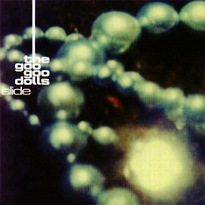Piano Sheets > Goo Goo Dolls Sheet Music > Slide (ver. 1) Piano Sheet
Slide (ver. 1) by Goo Goo Dolls - Piano Sheets and Free Sheet Music

About the Song
"Slide" is a song by The Goo Goo Dolls. It was the first commercial single release from their sixth studio album, Dizzy Up the Girl.
The song reached number one on both the Billboard Adult Top 40 chart and the Modern Rock Tracks chart, and number eight on the Hot 100 chart in late 1998 and early 1999. The single was certified Gold by the RIAA on August 18, 2008. The Goo Goo Dolls is a rock band that formed in 1987 in Buffalo, New York by John Rzeznik and Robby Takac. As of 2007[update], the band has sold more than 9 million records in the US alone. "Slide" is a song by The Goo Goo Dolls. It was the first commercial single release from their sixth studio album, Dizzy Up the Girl.
The song reached number one on both the Billboard Adult Top 40 chart and the Modern Rock Tracks chart, and number eight on the Hot 100 chart in late 1998 and early 1999. The single was certified Gold by the RIAA on.
Download this sheet!
About the Artist

Random article
Music sheets - what is all about? Back in the 19th century, songs in the United States were popularized by musicians through music sheets. It was only in the 1950s when musicians started to bring music sheets to bands so they could play, allowing more people to hear their compositions.
Simply, a music sheet is musical composition in printed form. It is composed of unbound sheets of paper where a musical notation of a song is printed. Many associate it with popular music. However, musicians say popular songs are not the only ones written down on paper. Many classical songs were published in music sheets and classical musicians performed even unfamiliar songs with these printed compositions.
(More...)
